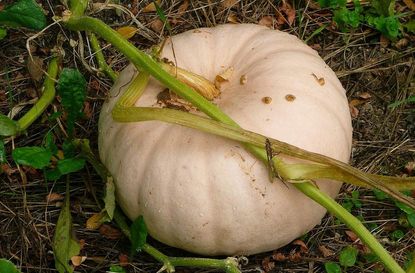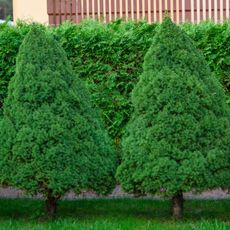Peanut Pumpkin Info And Care And Learn If Peanut Pumpkin Is Edible

Happily, heirloom madness has hit the mainstream produce aisles and you are now more likely to encounter unique veggies previously unattainable unless found at a farmer's market or your own veggie patch. The finding and purchasing of heirloom varieties has become easier, but there is still nothing like growing your own. One such example is growing peanut pumpkins -- truly a unique and delicious pumpkin specimen.
What is a Peanut Pumpkin and is Peanut Pumpkin Edible?
So, what is a peanut pumpkin? Peanut pumpkin (Cucurbita maxima 'Galeux d'Eysine') is an heirloom pumpkin varietal notable for its distinctive peanut-like growths peppering the exterior of its pink hued rind. Certainly unique looking, some might say unattractive, the “peanuts” are actually a buildup of excess sugar in the flesh of the pumpkin. Excess sugar, you ask? Yep, peanut pumpkin is more than edible; the flesh is sweet and delicious. These warty protuberances add up to an extremely sweet flesh, suitable for use in desserts such as pies, breads and cheesecakes. Also known as “Galeux d'Eysine,” additional peanut pumpkin info tells us that it is a 220-year-old heirloom varietal and possibly a cross between a Hubbard squash and an unknown pumpkin variety. Because it is an heirloom and not a hybrid, it is possible to save seeds from peanut pumpkin for planting the following year.
How to Grow Peanut Pumpkin Plants
Growing peanut pumpkin plants, like all pumpkins, will need a good bit of space. The squash itself weighs in at between 10-12 pounds (4.5-5.4 kg.). As with other winter squash, the plants are grown as annuals. These pumpkins are not frost tolerant and need soil temps between 60-70 F. (15-21 degrees C.) for germination. Peanut pumpkins should be grown in full sunlight in well-draining, moisture retentive soil with a pH between 6.0 and 6.5. Prep a 6 x 6 foot (1.8 x 1.8 m.) garden plot, amending as needed depending upon pH. Place four or five peanut pumpkin seeds at a depth of ¾ inches (2 cm) into the soil; be sure the soil temps have reached at least 65 F. (18 C.) in late spring. When planting multiple peanut pumpkin plants, be sure to space the seeds at least 3 feet (90 cm.) apart in rows 5 feet (1.5 cm.) apart. Lightly cover the seeds with soil and water in well. Cover with about 2 inches (5 cm.) of bark mulch to provide the growing pumpkins an area to rest above moist ground. which can lead to rot. Water the peanut pumpkins once a week with 2 inches (5 cm.) of water for clay or loamy soils, or twice a week with 1 inch (2.5 cm) of water in sandy soil. Keep the area around the squash weed free to minimize pest hiding places and disease spread. Maturation is between 100-105 days. Harvest the peanut pumpkins prior to the first hard frost. Cut them from the vine, leaving 2 inches (5 cm.) of stem attached to the squash. Allow them to cure for two weeks in a well-ventilated area with temps about 80 F. (26 C.). Now they are ready to be turned into any culinary delicacy you can come up with and can be stored for an extended period of time ( up to three months) as well.
Gardening tips, videos, info and more delivered right to your inbox!
Sign up for the Gardening Know How newsletter today and receive a free download of our DIY eBook "Bring Your Garden Indoors: 13 DIY Projects For Fall And Winter".

Amy Grant has been gardening for 30 years and writing for 15. A professional chef and caterer, Amy's area of expertise is culinary gardening.
-
 The Best Gifts For Gardeners: 25 Thoughtful Ideas To Delight For Christmas 2024
The Best Gifts For Gardeners: 25 Thoughtful Ideas To Delight For Christmas 2024Treat that special gardener in your life to a gift they'll cherish over the holiday season and for many years to come, with our expertly curated selection.
By Melanie Griffiths
-
 Try These 5 Types Of Spruce Trees – Easy Ways To Add Evergreen Beauty To Every Garden
Try These 5 Types Of Spruce Trees – Easy Ways To Add Evergreen Beauty To Every GardenYou might not have the largest yard or plot, but that doesn’t mean you can’t grow the mighty spruce. These 5 types of spruce trees are very adaptable to different spaces
By Teo Spengler